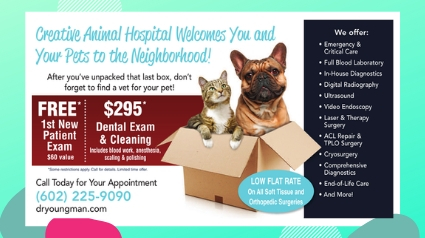We’ve talked about some dental branding tips previously, but today we want to cover why dental branding is important. Apple. Coca-Cola. Mercedes. Brands known throughout the world. The astounding name awareness their marketers have created didn’t happen overnight. Years of consistent visibility imprinted these brands on us. So much so you can likely picture their logos in your head right now. In fact, some branding is so successful that it becomes ingrained into our culture. Kleenex® is one such example. A brand name that became so popular that consumers largely use Kleenex to describe all facial tissue. So when you think about your practice and how to build it into a growing practice, you need to think about your dental branding. 
Why should you brand your dental practice?
No matter if you’re a new practice or an established office, branding is essential for developing and maintaining visibility and competitiveness. Branding is a reinvestment in your practice. The ROI of successful branding is sustainability, growth and prosperity. Building a brand that is recognizable and connects with your target audience is the ultimate goal. Branding is not just about a carefully crafted name, logo or tagline. It’s about connections. Many marketers use emotion-stirring messages and imagery because people relate to brands in an emotional way; there is a feeling associated with a product or service.
Dental branding can be extremely powerful. Every day, perception rather than experience greatly influences buying behavior. Marketers utilize branding and marketing tactics like advertising to influence, even change perception. You can too. For example, a practice that is perceived as providing gentle dental care for children is better positioned to attract pediatric patients even if the parents are not familiar with the practice.
Create your own dental brand
So now that you know how vital branding is to the success of your practice, where do you start? First, identify your target audience(s) and determine what types of patients you want to attract: adults, families, children, seniors, etc. Understanding exactly who you want to reach will make crafting your tagline, messaging and choosing imagery for marketing easier and more effective.
Second, evaluate your practice name and logo. Ask your team; do a patient survey or focus group. Do your name and logo accurately represent your team, mission, how you’d like to be perceived and what you do best? If not, a name refresh or new logo may be needed.
Third, do you have a tagline? If not, you may want to consider writing one. Two marketing industry favorites are The New York Times “All the news that’s fit to print” and Meow Mix® “Tastes so good, cats
ask for it by name.” See how clearly each tagline communicates what each does? You may end up writing a tagline first once you isolate what you want your practice strengths to be and then using it as a basis for developing your brand.
Launching your brand
Consistency is key. Once you develop your brand, stick to it. Not to say that your brand cannot evolve over time. Apple eventually removed the rainbow stripes from their iconic apple logo. But that’s Apple. Changes to branding can confuse your audience. Your practice’s brand should be used consistently in all of your marketing materials, including but not limited to your website, advertisements, signage, patient communications and giveaways. Consistent use of your brand ensures that you are projecting a uniform identity to your target audiences. Every impression of your brand, every time it is seen, builds brand recognition. Repetition is how brand recognition increases in your community. Every interaction with current and potential patients is an opportunity to strengthen your brand. Once members of your target audiences recognize your name, brand preference forms. When they are faced with choosing among numerous practices, they think of your practice and prefer yours because of how you’ve distinguished yourself from the competition. When people choose your practice consistently, you have achieved the brand loyalty.







